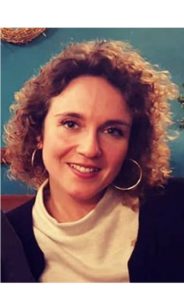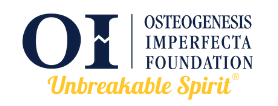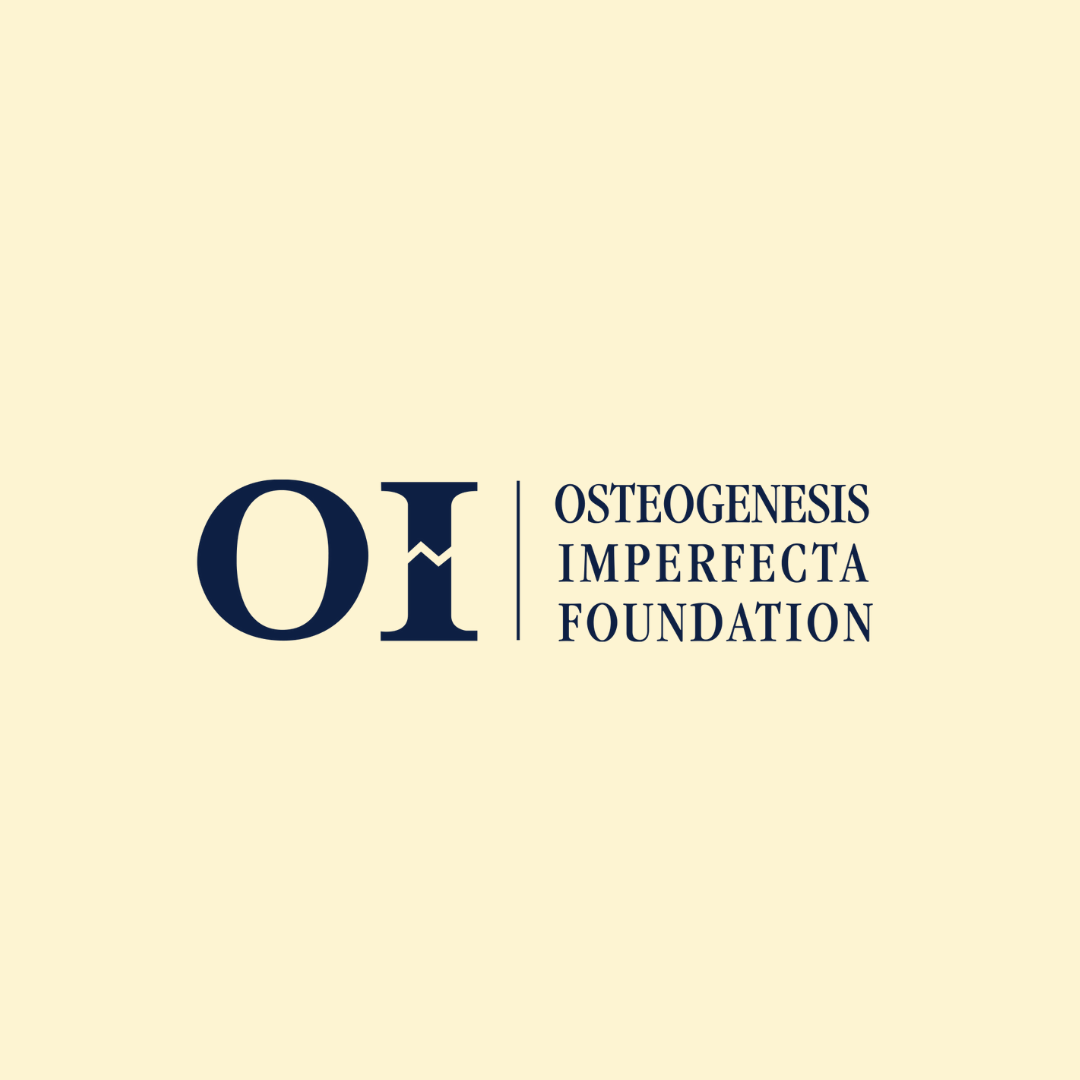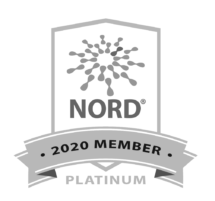Meet Dr. Francesca Tonelli, OIF Michael Geisman Fellow
By: Gabriela Beug, OIF Science and Media Communications Intern
As osteogenesis imperfecta is a rare bone disease, research grants remain difficult to acquire worldwide. The Osteogenesis Imperfecta Foundation makes research a priority through the Michael Geisman Fellowship program (created in memory of Michael Geisman, son of OI Foundation founder Gemma Geisman), which funds post-doctoral trainees whose research aims to predict, prevent, diagnose, and treat osteogenesis imperfecta (OI).
With the support of the Michael Geisman Fellowship program, awardees work to develop new approaches for therapies targeting OI. In the developmental stages, therapies are first tested on animal models (i.e. mice, zebrafish) before passing the requirements to move on to clinical trials. Studying diseases requires organisms with the same morphological and biochemical properties as well as a similar genome to humans. Both mice and zebrafish have a high level of genetic conservation – meaning a large part of their genome is identical to humans. While in zebrafish this number is around 70%, in mice it averages around 85%. Mice and zebrafish offer an alternative to relying on human samples to test hypotheses, especially for rare bone disease where access to samples is limited.
 The OI Foundation is proud to support Dr. Francesca Tonelli of University of Pavia in Pavia, Italy.
The OI Foundation is proud to support Dr. Francesca Tonelli of University of Pavia in Pavia, Italy.
“I believe it is a unique experience to study a rare disease and I wish every scientist could have this opportunity at some point in their career. Even if I enjoy the individual aspects of lab work like creating animal models, the research in the OI field makes me feel like I will support other people and it is personally very rewarding. It’s the interaction with an individual with OI and the hope of finding a cure for them that make me passionate and persistent in testing new hypotheses until we can develop a cure.” – Dr. Francesca Tonelli
Francesca Tonelli obtained her bachelor’s degree in medical and pharmaceutical biotechnology from the University of Pavia in Pavia, Italy in 2012 and continued in the same field, completing her master’s degree in 2014. Her journey with osteogenesis imperfecta began by characterizing the dominant OI zebrafish model Chihuahua, which at the time was a new model for studying osteogenesis imperfecta. During her PhD she generated several new recessive OI zebrafish models by CRISPR Cas9 gene editing technique. In 2017, Tonelli received her Ph.D. in biomedical sciences under Dr. Antonella Forlino’s supervision. Continuing under her mentorship for her postdoctoral training, she is now applying her training to research in osteogenesis imperfecta. In her free time, Dr. Tonelli likes to read, kickbox, or scuba dive.
Areas of Expertise
- Crispr-Cas9 gene editing
- Designing, cloning, transcribing CRISPR constructs
- Generating zebrafish models to investigate skeletal diseases
- Drug screening: 4-PBA
It is well established that cellular stress is one of the main factors contributing to the osteogenesis imperfecta disease, which disrupts the homeostasis (the “well-being” of cells), leading to protein misfolding. The novel finding of Dr. Tonelli led to identifying chemical compounds such as 4-phenylbutyrate (4-PBA), a drug approved for urea cycle disorders whose beneficial chaperone activity also aids in ameliorating the bone phenotype of OI in the dominant and the recessive zebrafish model.
Her research now focuses on the study of bone formation, thanks to the zebrafish’s ability to regenerate the caudal fin. Caudal fin regeneration essentially mimics the dermal bone formation process similarly as it would occur during the human bone growth. Caudal fin regeneration can be exploited also to test the effect of new potential drugs.
Although 4-PBA has been identified as a potential therapeutic target, steps remain to transition from the lab to the translation in patients. Dr. Tonelli’s next step is to test a chemically modified version of 4-PBA, which would increase drug stability, specifically targeting bone tissue, making it more friendly for clinical trials in the future.
Selected Publications:
- Zebrafish: A Resourceful Vertebrate Model to Investigate Skeletal Disorders. Tonelli F, Bek JW, Besio R, De Clercq A, Leoni L, Salmon P, Coucke PJ, Willaert A, Forlino A. Front Endocrinol 2020 doi: 10.3389/fendo.2020.00489
- Novel RPL13 variants and variable clinical expressivity in a human ribosomopathy with spondyloepimetaphyseal dysplasia. Costantini A, Alm JJ, Tonelli F, Valta H, Huber C, Tran AN, Daponte V, Kirova N, Kwon YU, Bae JY, Chung WY, Tan S, Sznajer Y, Nishimura G, Näreoja T, Warren AJ, Cormier-Daire V, Kim OH, Forlino A, Cho TJ, Mäkitie O. J Bone Miner Res 2020 doi: 10.1002/jbmr.4177
- Crtap and p3h1 knock out zebrafish support defective collagen chaperoning as the cause of their osteogenesis imperfecta phenotype. Tonelli F, Cotti S, Leoni L, Besio R, Gioia R, Marchese L, Giorgetti S, Gistelinck C, Wagener R, Kobbe B, Larionova D, Fiedler I.A.K., Busse B, Eyre D, Rossi A, Witten PE, Forlino A. Matrix Biology 2020, (90): 40-60. doi: 10.1016/j.matbio.2020.03.004
- Bone biology: insights from osteogenesis imperfecta and related rare fragility syndromes.
Besio R, Chow CW, Tonelli F, Marini JC, Forlino A. FEBS J. 2019, (15):3033-3056. doi: 10.1111/febs.14963. - Steady-State and Pulse-Chase Analyses of Fibrillar Collagen. Forlino A, Tonelli F, Besio R. Methods Mol Biol. 2019;(1952):45-53. doi: 10.1007/978-1-4939-9133-4_4.
- Zebrafish Collagen Type I: Molecular and Biochemical Characterization of the Major Structural Protein in Bone and Skin.Gistelinck C, Gioia R, Gagliardi A, Tonelli F, Marchese L, Bianchi L, Landi C, Bini L, Huysseune A, Witten PE, Staes A, Gevaert K, De Rocker N, Menten B, Malfait F, Leikin S, Carra S, Tenni R, Rossi A, De Paepe A, Coucke P, Willaert A, Forlino A. Sci Rep. 2016, (6):21540.
- The chaperone activity of 4PBA ameliorates the skeletal phenotype of Chihuahua, a zebrafish model for dominant osteogenesis imperfecta. Gioia R.*, Tonelli F.*, Ceppi I., Biggiogera M., Leikin S., Fisher S., Tenedini E., Yorgan T.A., Schinke T., Tian K., Schwartz J.M., Forte F., Wagener R., Villani S., Rossi A. and Forlino A. Hum Mol Genet 2017, (26):2897-2911. * first co-authors








